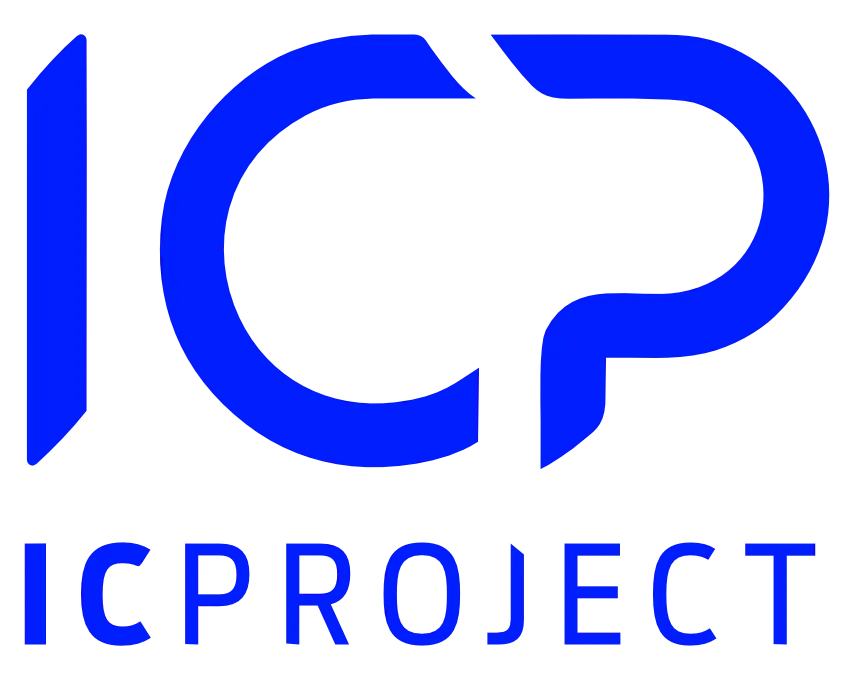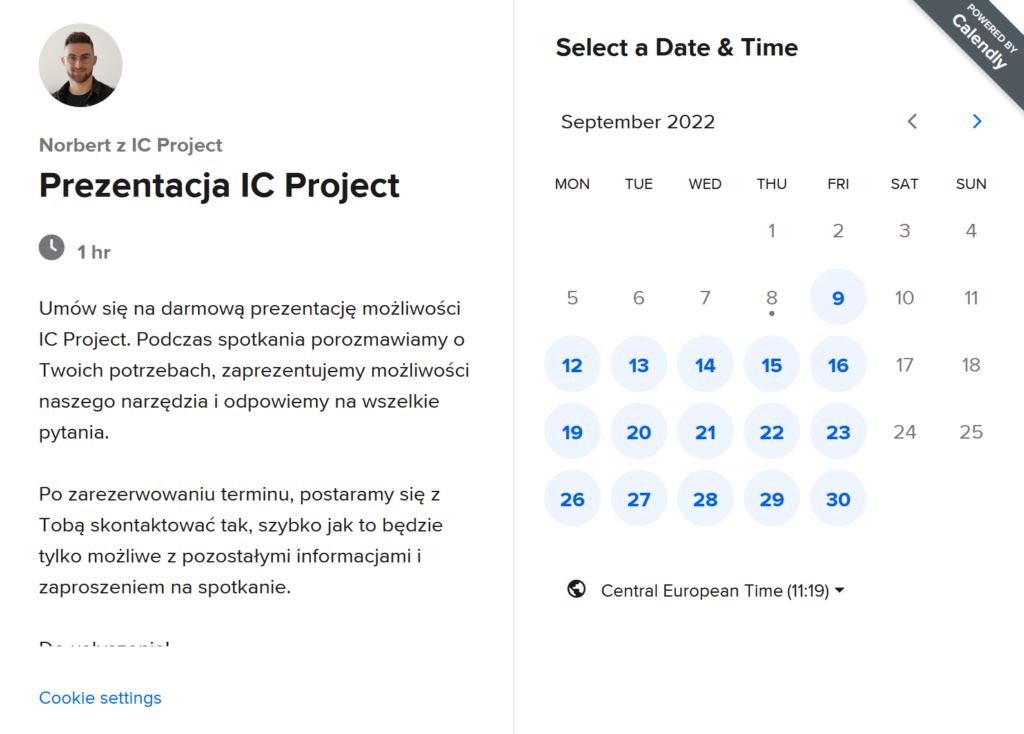Asana is one of the most popular project management software on the market. It has many advantages, which are appreciated by users all over the world, but at the same time it also has some limitations that require companies to look for alternative solutions. Contrary to appearances, Asana has solid competition and the choice on the market is quite wide. Are you looking for an Asana alternative? You are in the right place. We have specifically collected and analysed the top 5 alternatives to Asana in 2024 for you.
Asana is primarily a project management programme with specific, defined functions. It is an excellent starter solution, as it allows you to enter the world of this type of tool practically for free and without much technological or project knowledge, although it is a solution that has some limitations. Without a doubt, it isn’t a comprehensive programme that will allow you to organise several business processes that often interact with each other. Moreover, it is a relatively expensive tool if you want to use its full capabilities, which is an insurmountable barrier for many companies and teams. At the end of the day, Asana is €24.99 per user, which is one of the highest prices compared to market competitors.
We therefore check what the market offers us and which interesting tools could be a great alternative to Asana. In our overview, we focused on the programmes’ capabilities, additional values (support, educational material, implementation) and price.
IC Project
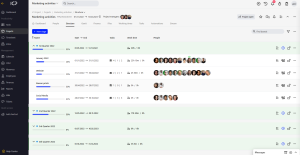
It is a programme that offers various and comprehensive possibilities for the company. Above all, the key of the entire system is project management, and this is already a key alternative to Asana at the start. In this respect, IC Project shouldn’t be inferior to Asana, as the functionality around project management itself is extensive and comprehensive. It seems that anyone from the project world should find in this programme what will allow them to manage projects effectively. As in Asana, everything also revolves around effective task-based working. It is hard to find any shortcomings.
The key thing, however, is that you will find many more possibilities in this programme than Asana offers, and this is all combined with the world of projects. IC Project is a programme that offers an entire module for measuring and reporting working times to projects and completed tasks. Going further, each project is equipped with a financial module, which not only calculates costs from the reported working times on the projects in progress, but also allows the creation of a project budget, control of expenses and revenues, and finally shows transparently the financial result, which is nothing but the bottom line. These types of connections seem to set IC Project very much apart from Asana, thus steering it towards not only an alternative to this programme, but perhaps a more comprehensive programme.
In IC Project, you will also find solutions such as a team calendar, a built-in communicator that automatically links threads to projects and tasks (optimal to have all project communication in one place!), a module for managing contractors, absences, creating a company knowledge base or even a service request system to link projects immediately to incoming requests, i.e. problems to be solved. It is amazing how many business processes can be linked together in this tool to have everything in one place. Most importantly, however, it is a freely configurable system and the whole thing has been built on a modular basis, which makes it easy to navigate and get to where you want to go.
This is not a system for millions of coins, as you have to pay €11.50/user/month for the full functionality. Comparing with the full functionality package of Asana, here we have an amount in conversion of ~24.99. IC Project therefore grows to be more than twice as cheap.
Jira
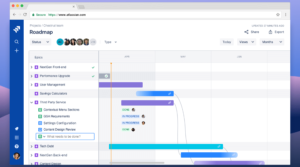
Jira is a true classic of project management, especially in the IT industry. It seems that most people coming from or working in this industry are very familiar with this work management product. Opinions vary, some cannot imagine working without Jira at the moment, while for others it can be an unpleasant chore. Despite the extreme opinions, Jira is a very functional programme that can really do a lot. If we are looking for an alternative to Asana, it would be a sin not to consider this product.
Jira, above all, isn’t the simplest solution. As a standard, it will allow you to effectively manage projects, tasks and incoming requests, but for more advanced processes, it requires a slightly more complicated configuration. Of course, this type of configuration can be done on your own, because the creators of the programme have recently worked hard on the very intuitiveness of the tool, but, as this is a programme dedicated to the IT industry … we can imagine that this type of configuration is not the easiest part for technology laymen. The implementation itself isn’t the easiest either, and very often requires working closely with the company implementing this software. Atlassian itself has a number of partners who specialise in Jira implementations.
Functionally, you will undoubtedly find here most of the functionality that Asana offers, but in addition much more. There is no kidding, Jira is a much more advanced programme that can handle more business processes than Asana itself. Although we might call Jira a project management programme, it is actually an advanced product that enables you to manage your work and business processes in your company. As long as you manage to configure and implement this software properly, and at the same time teach your users how to use Atlassian’s product, you will undoubtedly reap a lot of benefits from this implementation. It is also worth noting that Jira is able to combine seamlessly with other services and products that Atlassian has on offer.
The price of Jira is lower than that of Asana. With the functionally richest package, we have to reckon with a cost of approximately $16 per user per month Recall that Asana is a ceiling of $24.99, so the difference is considerable. Admittedly, Jira is slightly more expensive than the aforementioned IC Project, but the price difference is minimal. Let us also remember that with Jira, you have to take into account the cost of additional services, such as configuration or implementation itself, which isn’t the cheapest service on the market. However, the price of such services depends individually on your needs and the offer of the partner company.
Trello
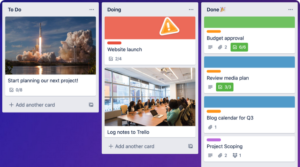
Trello is another product from Atlassian that provides a simple, and intuitive task management tool. No doubt it can be a great alternative to Asana, but especially in the context of task-based work. We aren’t brave enough to talk about Trello as a project management programme, as Trello is unfortunately somewhat lacking on this level. Nevertheless, very often project work isn’t advanced and companies have simple and not very complex project processes, more organisational. In this matter, Trello is an alternative to Asana and this must be clearly and transparently emphasised. So it all depends on your needs and the level of sophistication of your design processes.
If you’re familiar with Kanban boards, then Trello is their true hegemon. It is the software that very much focused years ago on Kanban boards and the organisation of task-based work precisely by means of this work methodology. People loved it, and switched their colourful pieces of paper scattered around the computer, precisely to an environment of this type of tool. Trello has of course evolved since then, but the very idea behind the tool has remained. At this point in Trello, you can freely configure and modify Kanban boards, specifying statuses, creating custom fields on tasks, and even building arbitrary automations between tasks. The new Butler function, for example, is responsible for this.
In Trello, you will also find quite a few ready-made templates that will allow you to arrange your work on Kanban boards without getting too creative at the start. Each such template can be freely customised or taken as inspiration for your own board configuration. Trello also provides a lot of pre-built integrations to use with various tools to keep everything running in one command centre, and connected to each other. The less manual work you have to do, the better for you, your productivity and the target time savings. Adding tasks itself is so simple and intuitive that you just type in the name and the task already lands on the board.
And at this point, it’s time to take a moment to think. Are you looking for an alternative project management programme that will realistically be a tool for projects, or are you after a simple solution for task-based work? This is an important question to ask yourself with our suggestion about Trello. However, if task management on Kanban boards is only a slice of what you need, you definitely need to opt for one of our other alternative Asanas from this article.
To be fair, the price for Trello isn’t very low. We can compare it with the price of Jira, which, however, is functionally much more advanced. Both products, however, come from Atlassian. For Trello in full function we have to pay $17.50 per user per month. This is still a much lower price than Asana offers us, but for task-based work, you can probably find cheaper solutions. What is worth pointing out, with Trello you may not need any implementation services, because it is, however, a simple tool to configure and implement.
Bitrix24

Bitrix24 is a comprehensive programme that combines many services and capabilities. At the outset, however, we must point out that it is a Russian solution, which may be a key consideration in the context of a possible purchase decision, especially in these times. We, however, try to approach the analysis fairly, and thus point out the pros and cons.
Functionally, Bitrix is a really rich system that allows you to manage projects, tasks, has a built-in CRM and even… a website builder. The multitude of features is high, and this unfortunately also makes it more difficult to use the programme itself. Many users complain that the interface isn’t very intuitive, and we also encountered a few functional errors in our tests. However, we aren’t making a judgement based on this information, but merely signalling that this has occurred.
It has to be said that in terms of functionality, Bitrix24 is a very solid alternative to Asana, which can functionally outperform Asana by up to several levels. Once again, however, it all depends on your needs, whether project management or management of the entire company is the key to success. It is the latter need that the complexity of services offered by Bitrix24 tries to address. With this in mind, it should also be noted that the implementation of this programme itself is not very straightforward and in most cases will require the assistance of specialists. In this situation, we cannot count on the dedicated support of Bitrix24, but only on the partners of this programme, i.e. companies specialising in software implementation and maintenance. In this case, costs can go up dramatically, and certainly the decision to choose or implement this tool should be preceded by a thorough analysis of technical possibilities and costs.
Also strongly linked to this information is ongoing support, which is hardly ever provided by Bitrix24. Companies can only use the available educational material, but there is no direct contact. The entire spectrum of such responsibilities is shifted to partners, i.e. external companies. In this case, however, we don’t have much influence or confidence in the quality of the services offered.
Moving on to the price, the billing model differs quite a bit from the other Asana alternatives we point out in this article. It should also be noted that the entire price list is changing and evolving strongly. Just a few months ago it looked completely different, so it is hard to say whether the version currently under review is the final version and will not change. As of today, in Bitrix24 we pay for broad user packages. In the example full-featured package of up to 250 users, we have a price of $399 per month. It is difficult to compare this with other tools such as Asana, IC Project, Jira or Trello, as this is a completely different billing model. Certainly with a larger number of users, the price can be advantageous. With a lower number of users, the other programmes in our list will be much more favourable.
In summary, Bitrix24 functionally looks very solid against Asana. However, the key elements are the Russian origin of this programme, the average quality of support and implementation, and the enormity of the features, which can cause a bit of implementation problems. If you get past these problems, however, a lot of benefits can be derived from this programme.
Nozbe

Nozbe is another tool in our list of alternatives to Asana. We mentioned IC Project at the beginning, a Polish project management programme, and now it’s the turn of Nozbe, which is more focused on task-based work. It’s a programme that will be easier for us to compare with Trello, as just managing projects, especially the more advanced ones, would probably be a bit of a stretch for Nozbe. However, as with Trello, it all depends on your needs and the specifics of the project process itself. Some projects don’t need to manage milestones, schedules, finances or working times, but are based on task-based work organisation. In this case, Nozbe may prove to be a great choice instead of Asana.
In the best Asana alternatives, she looks for different solutions, because that is also what Asana itself offers. Nozbe is the tool that will definitely allow you to increase productivity, and this is, after all, also one of the main goals for Asana itself. In Nozbe, the task work system itself is very different from the way it is structured in Trello. There are no Kanban boards here, and much of the task management is based on task lists, which is what we are familiar with in the simplest of activities, even starting from our schooling. Task functions are heavily simplified, you won’t find advanced automation, a multitude of customisable fields and such aspects here, because that’s not what Trello was created for and serves on a daily basis. It is meant to be a maximally simple and intuitive tool that supports productivity and daily task work. At the same time, it keeps the whole organisation of our project work in check. And this is undoubtedly what we find in Nozbe.
As we mentioned in the first paragraph, it is a Polish programme, so the very entrance threshold of your company into the Nozbe structure is strongly eased. We are well aware that every employee feel better with a tool that is available in their native language and, on the other hand, there are still few companies on the market where a foreign language is required for all positions in the company. When choosing and implementing this type of tool, it is worth bearing this in mind so as not to generate additional problems within the company. A tool like Nozbe is meant to help and support, not embarrass users. With Nozbe, the problem of implementation difficulties is practically non-existent, as the programme is really easy to use. There is a lot of educational material to help you take your first steps.
As you can see, Nozbe can be a concrete alternative to Asana, but only in terms of low-level task work needs. To be honest, it’s not an advanced project management programme, that’s not its aim or purpose. In terms of price, Nozbe is counter-intuitively not the cheapest (for intuitive task-based needs), as the price in full functionality is £40/user/month. It is therefore the cheapest solution in our list of alternatives, but also the least functionally rich. Compared to Asana and £108, the difference is visible at a glance. However, it all comes down to your needs.
Choosing an alternative programme to Asana is not as big a problem as it might seem at the outset. The market is full of programmes similar to Asana, some of them more functionally and others a little less so. Some are Polish solutions and others are foreign. Without a doubt, with each one you should check that it is a programme that suits your needs, because that is the most important thing. As they say, there are no perfect programmes, but the potential of the technology market is huge, and you will undoubtedly find something for you and your business.
We hope that the 5 alternatives to Asana in 2024, and thus our overview, will be helpful to you in this search.
